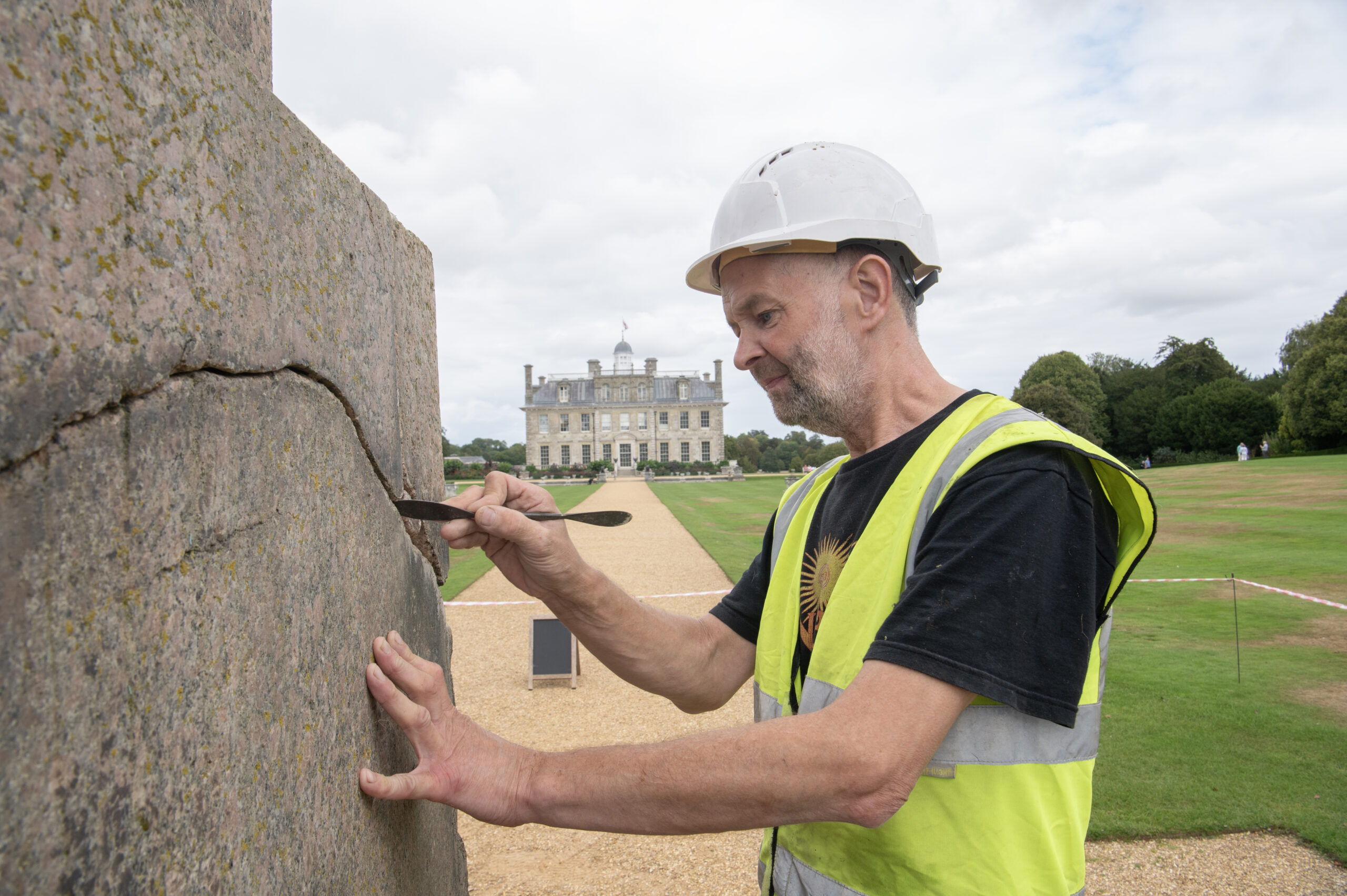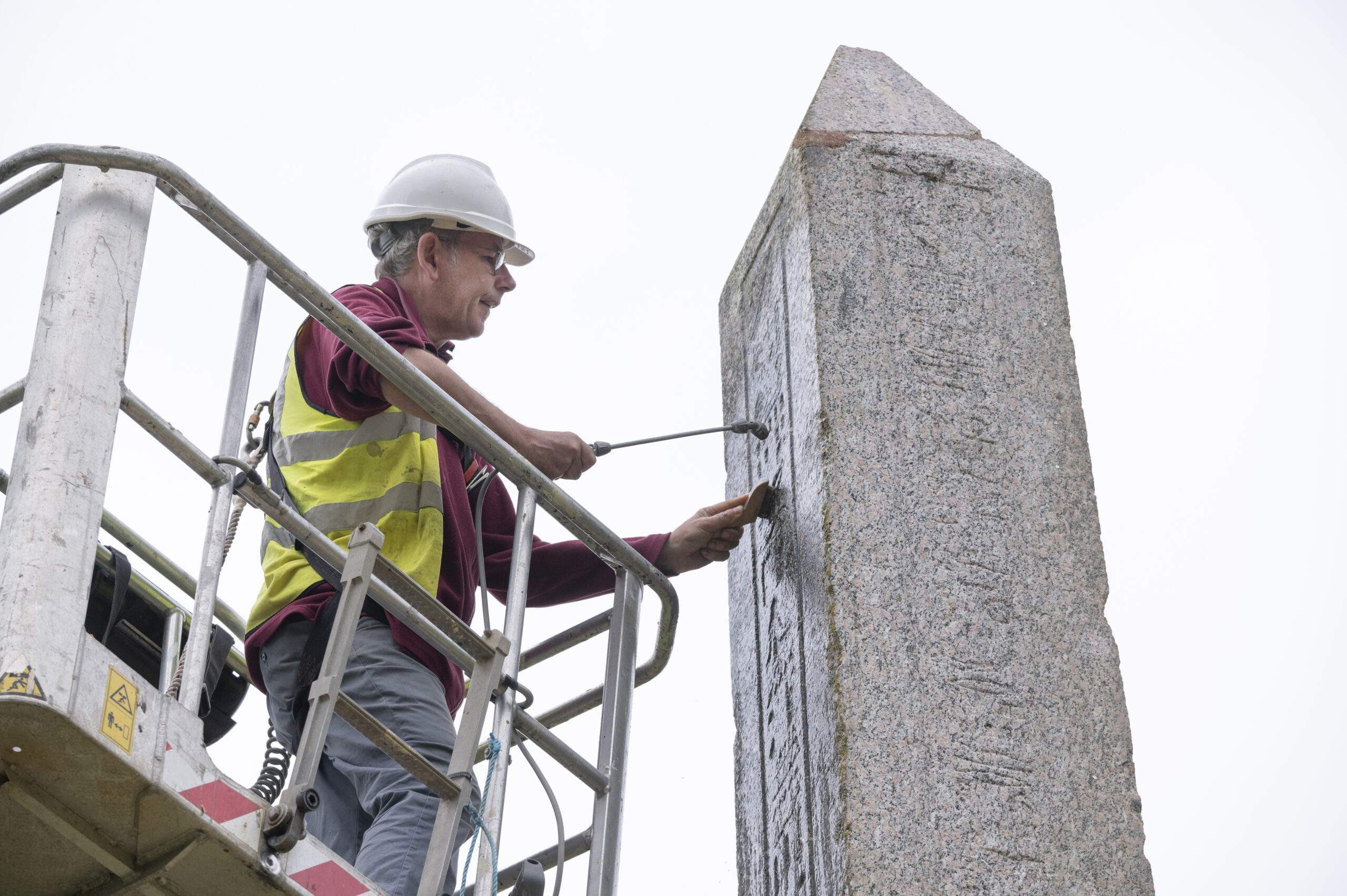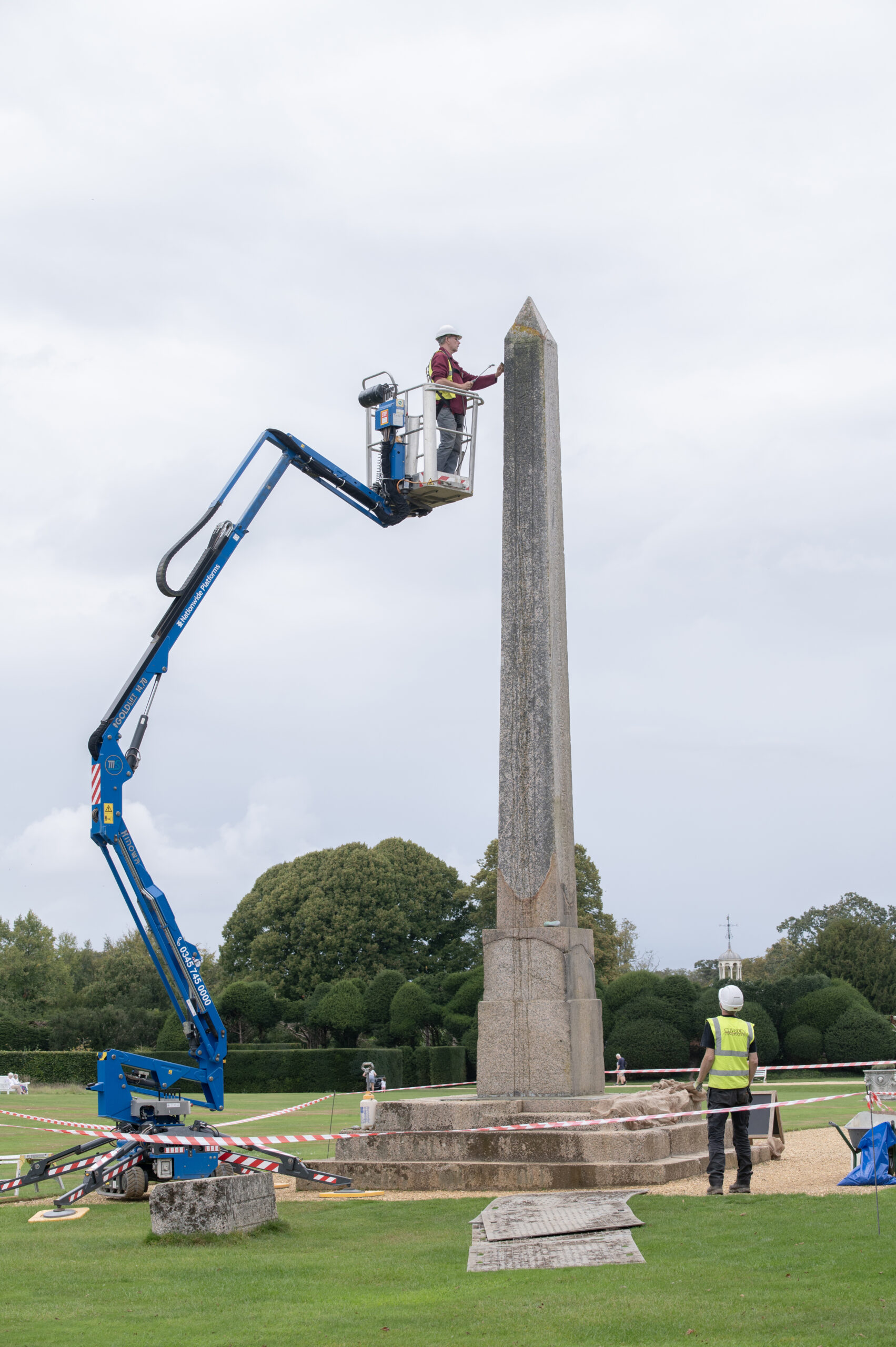DETAILS of taxes dating back almost 2,000 years are clear to read once again – thanks to cleaning work at Dorset estate.
Cleaning and repointing work has been carried out on the Philae obelisk at Kingston Lacy, near Wimborne, by the National Trust.
The obelisk, which has been on the estate for almost 200 years, played an important part in the deciphering of hieroglyphics.

The obelisk, which has been on the South Lawn at Kingston Lacy for almost 200 years, is in good condition. Pictures: Jay Williams/National Trust
It was originally erected outside a temple on the island of Philae, in Aswan, southern Egypt, in around 150BC.
William John Bankes, whose extensive and groundbreaking work in Egypt at the beginning of the 19th century helped lay the foundations of modern archaeology, found it in 1815.
“It is effectively a documentation of taxes, with inscriptions in both Greek and hieroglyphics,” said a Kingston Lacy spokesperson.

The hieroglyphics are essentially a list of taxes, experts say. Pictures: Jay Williams/National Trust
“The dual inscriptions enabled William John was able to identify the names of Ptolemy and Cleopatra, information that other scholars were able to use in the race to understand hieroglyphics.”
But despite the historical importance of the obelisk, good old water and elbow grease were used to clean the pink granite structure, with repair work carried out using traditional materials.
Kingston Lacy, cared for by the National Trust, is open daily. For more information and opening times, visit www.nationaltrust.org.uk/visit/dorset/kingston-lacy.

Experts putting in the work to clean the obelisk at Kingston Lacy. Pictures: Jay Williams/National Trust









Leave a Reply